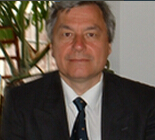


Abstract—Gas metal arc welding is a fusion welding process having wide applications in industry. In this process proper selection of input welding parameters is necessary in order to obtain a good quality weld and subsequently increase the productivity of the process. In order to obtain a good quality weld, it is therefore, necessary to control the input welding parameters. One of the important welding output parameters in this process is weld dilution affecting the quality and productivity of weldment. In this research paper using Taguchi's method of design of experiments a mathematical model was developed using parameters such as, wire feed rate (W), welding voltage (V), nozzle-to-plate distance (N), welding speed (S) and gas flow rate (G) on weld dilution. After collecting data, signal-to-noise ratios (S/N) were calculated and used in order to obtain the optimum levels for every input parameter. Subsequently, using analysis of variance the significant coefficients for each input factor on the weld dilution were determined and validated. Finally a mathematical model based on regression analysis for predicting the weld dilution was obtained. Results from this research work show that wire feed rate (W),arc voltage (V) have increasing effect while nozzle-to-plate distance (N) and welding speed (S) have decreasing effect on the dilution whereas gas Flow rate alone has almost no effect on dilution but its interaction with other parameters makes it quite significant in increasing the weld dilution.
Index Terms—Gas Metal Arc Welding (GMAW), Weld Dilution, Taguchi Method, Regression Analysis, Signal-to- Noise Ratio(S/N).
M. Aghakhani is with the Department of Mechanical Engineering, Faculty of Engineering at the University of Razi, Kermanshah, Iran (phone: +988314274535-8; fax: +988314283263; e-mail: aghakhani@razi.ac.ir). E. Mehrdad is with the Department of Mechanical Engineering, Faculty of Engineering at the University of Razi, Kermanshah, Iran(e-mail: ehsanmehrdad88@gmail.com).
E. Hayati is with the Department of Mechanical Engineering, Faculty of Engineering at the University of Razi, Kermanshah, Iran(e-mail: ehsan.hayati@yahoo.com).
Cite: M. Aghakhani, E. Mehrdad, and E. Hayati, "Parametric Optimization of Gas Metal Arc Welding Process by Taguchi Method on Weld Dilution," International Journal of Modeling and Optimization vol. 1, no. 3, pp. 216-220, 2011.
Copyright © 2008-2024. International Journal of Modeling and Optimization. All rights reserved.
E-mail: ijmo@iacsitp.com